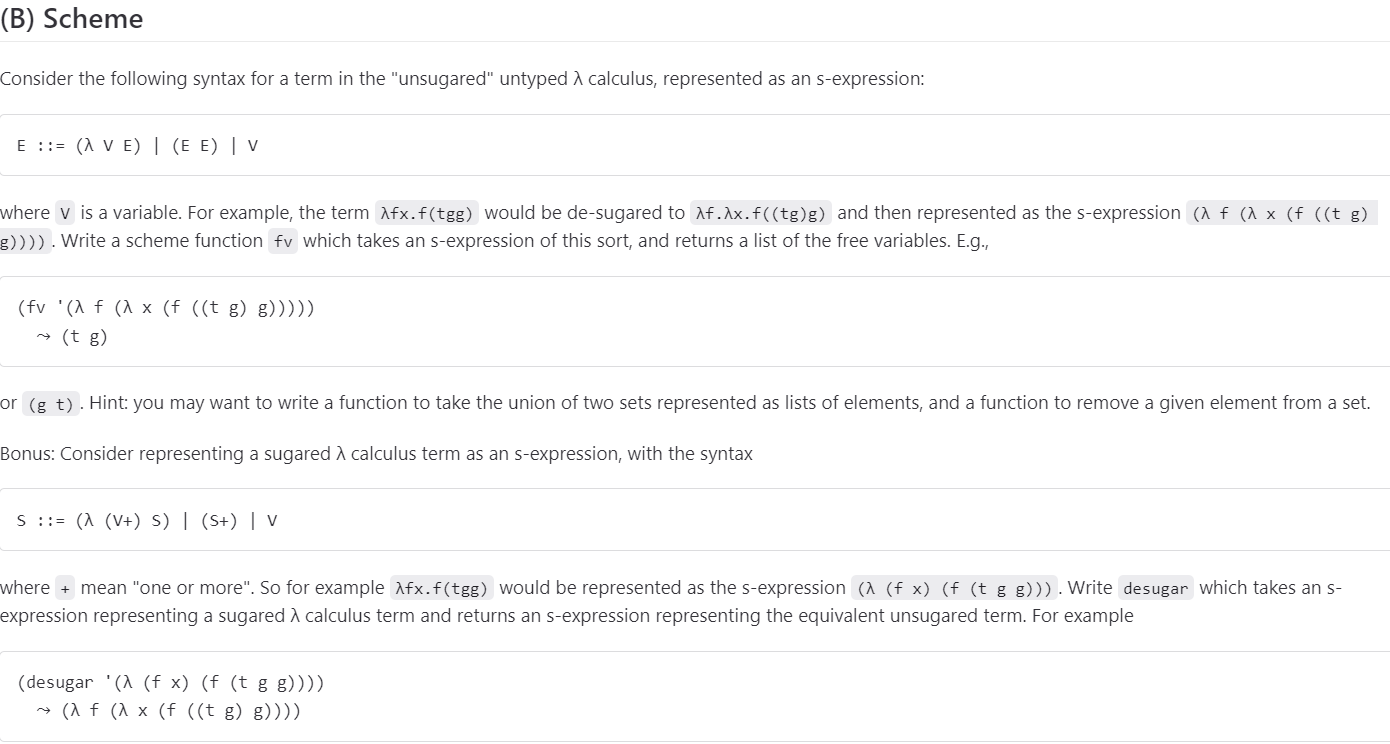Answered step by step
Verified Expert Solution
Question
1 Approved Answer
Please explain thoroughly :) Consider the following syntax for a term in the unsugared untyped calculus, represented as an s-expression: E::=(E)(EE)V where V is a
Please explain thoroughly :) 
Step by Step Solution
There are 3 Steps involved in it
Step: 1

Get Instant Access to Expert-Tailored Solutions
See step-by-step solutions with expert insights and AI powered tools for academic success
Step: 2

Step: 3

Ace Your Homework with AI
Get the answers you need in no time with our AI-driven, step-by-step assistance
Get Started


